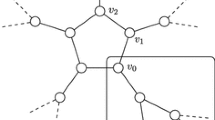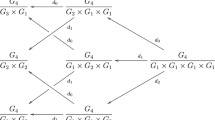Abstract
Let N be a normal subgroup of a group G. An N-module Q is called G-stable provided that Q is equivalent to the twist Q g of Q by g, for every g ∈ G. If the action of N on Q extends to an action of G on Q, then Q is obviously G-stable, but the converse need not hold. A famous conjecture in the modular representation theory of reductive algebraic groups G asserts that the (obviously G-stable) projective indecomposable modules (PIMs) Q for the Frobenius kernels G r (r ≥ 1) of G have a G-module structure. It is sometimes just as useful (for a general module Q) to know that a finite direct sum Q ⊕ n of Q has a compatible G-module structure. In this paper, this property is called numerical stability. In recent work (Parshall and Scott, Adv Math 226:2065–2088, 2011), the authors established numerical stability in the special case of PIMs. We provide in this paper a more general context for that result, working in the context of k-group schemes and a suitable version of G-stability, called strong G-stability. Among our results here is the determination of necessary and sufficient conditions for the existence of a compatible G-module structure on a strongly G-stable N-module, in the form of a cohomological obstruction which must be trivial precisely when the G-module structure exists. Our main result is achieved by giving an approach to killing the obstruction by tensoring with certain finite dimensional G/N-modules.
Similar content being viewed by others
References
Cline, E.: Stable Clifford theory. J. Algebra 22, 350–364 (1972)
Cline, E., Parshall, B., Scott, L.: Induced modules and affine quotients. Math. Ann. 230, 1–14 (1977)
Demazure, M., Gabriel, P.: Groupes algébriques, I. North-Holland (1970)
Donkin, S.: On a question of Verma. J. Lond. Math. Soc. 21, 445–455 (1980)
Donkin, S.: A note on the characters of the projective modules for the infinitesimal subgroups of a semisimple group. Math. Scand. 51, 142–150 (1982)
Donkin, S.: On tilting modules for algebraic groups. Math. Z. 212, 39–60 (1993)
Grosshans, F.: Algebraic Homogeneous Spaces and Invariant Theory. Lecture Notes in Mathematics, vol. 1673. Springer-Verlag, Berlin (1997)
Hall, M.: Theory of Groups. Chelsea (1976)
Jantzen, J.C.: Representations of Algebraic Groups, 2nd edn. Math. Surveys and Monographs, vol. 107. American Mathematical Society, Providence (2003)
Parshall, B., Scott, L.: Bounding Ext for modules for algebraic groups, finite groups and quantum groups. Adv. Math. 226, 2065–2088 (2011)
Author information
Authors and Affiliations
Corresponding author
Additional information
Research supported in part by the National Science Foundation.
Rights and permissions
About this article
Cite this article
Parshall, B.J., Scott, L.L. Variations on a Theme of Cline and Donkin. Algebr Represent Theor 16, 793–817 (2013). https://doi.org/10.1007/s10468-011-9332-0
Received:
Accepted:
Published:
Issue Date:
DOI: https://doi.org/10.1007/s10468-011-9332-0




